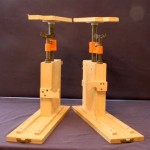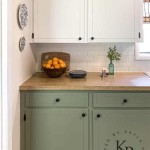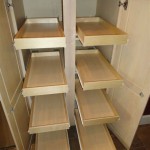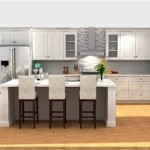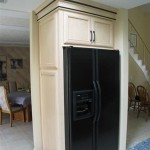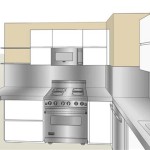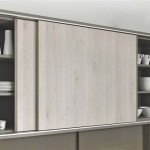Is It Easy To Paint Your Own Kitchen Cabinets and Countertops?
The question of whether it is easy to paint kitchen cabinets and countertops is complex, with the answer largely dependent on individual skill level, available time, budget, and desired outcome. While the process appears straightforward on the surface, achieving a professional, durable finish requires meticulous preparation, careful execution, and the use of appropriate materials. This article will explore the various factors involved in painting kitchen cabinets and countertops, highlighting the potential challenges and outlining the steps necessary to achieve a satisfactory result.
Painting kitchen cabinets and countertops is often considered a cost-effective alternative to replacing them entirely. New cabinets and countertops can represent a significant investment, whereas painting allows for a visual refresh at a fraction of the price. The perceived ease of the project, fueled by numerous online tutorials and DIY guides, can be misleading. What appears simple in a condensed video can be significantly more involved in practice, particularly for individuals with limited experience in home improvement projects.
The Importance of Preparation
Preparation is arguably the most critical stage of painting kitchen cabinets and countertops. This phase determines the final appearance and longevity of the paint job. Neglecting proper preparation can lead to peeling, chipping, uneven coverage, and ultimately, a result that is far from satisfactory. Thorough cleaning is the first step. Cabinets and countertops accumulate grease, dirt, and grime over time, which can hinder paint adhesion. A strong degreaser and a scrub brush are essential for removing this buildup. Rinsing thoroughly with clean water is equally important to eliminate any residue from the cleaning solution.
Following cleaning, surface preparation is paramount. This typically involves sanding the cabinets and countertops to create a slightly rough surface, which allows the primer and paint to adhere more effectively. The specific grit of sandpaper required depends on the existing finish. For glossy or varnished surfaces, a coarser grit may be necessary to break through the existing coating. Dusting thoroughly after sanding is crucial to remove all sanding particles. Vacuuming and wiping down with a tack cloth ensures a clean and smooth surface for priming.
For cabinets, removing hardware, such as knobs and pulls, is essential for achieving a clean, professional look. If the hardware is being reused, it should be cleaned and stored safely. Filling any holes or imperfections with wood filler or patching compound is also part of the preparation process. Sanding the filled areas smooth ensures a seamless transition. Finally, masking off surrounding areas, such as walls, appliances, and flooring, with painter's tape and drop cloths protects them from paint splatters and drips. For countertops, consider the material. Laminate, for example, requires specialized primers and paints compared to solid surface or stone countertops.
Selecting the Right Materials
Choosing the appropriate paint, primer, and tools is critical for achieving a durable and aesthetically pleasing finish. Using low-quality materials can compromise the entire project, leading to premature wear and tear. For cabinets, enamel paints are generally recommended due to their hardness and durability. Acrylic enamels and alkyd enamels are both popular choices, each with its own advantages and disadvantages. Acrylic enamels are water-based, making them easier to clean up and lower in VOCs (volatile organic compounds). Alkyd enamels, on the other hand, are oil-based and offer greater durability and a smoother finish, but they require mineral spirits for cleanup and have a stronger odor.
Primer is equally important for ensuring proper paint adhesion and preventing bleed-through from underlying stains or colors. A high-quality primer designed for cabinets is recommended. Consider using a bonding primer, especially on slick or non-porous surfaces. For countertops, the choice of paint depends heavily on the material. Laminate countertops require specialized paints formulated to adhere to smooth, non-porous surfaces. Epoxy paints are often used for countertops due to their durability and resistance to chemicals and heat. However, epoxy paints can be more challenging to work with and may require professional application for optimal results.
The tools used for painting also play a significant role in the final outcome. High-quality brushes, rollers, and paint sprayers can contribute to a smoother, more even finish. Brushes with synthetic bristles are generally preferred for water-based paints, while natural bristle brushes are better suited for oil-based paints. Foam rollers can minimize brushstrokes, but they may not be as durable as nap rollers. Paint sprayers can provide a professional-looking finish, but they require practice and proper ventilation. Investing in the right tools will significantly improve the quality of the paint job.
The Painting Process and Potential Challenges
The actual painting process involves applying multiple thin coats of primer and paint, allowing each coat to dry completely before applying the next. This is crucial for achieving proper coverage and preventing drips or runs. Rushing the drying process can lead to a soft or tacky finish that is easily damaged. Light sanding between coats can also help to smooth out any imperfections and improve paint adhesion. Patience is key to achieving a high-quality finish.
Several challenges can arise during the painting process. One common issue is brushstrokes or roller marks. Applying paint in long, even strokes and using a high-quality brush or roller can minimize these marks. Another challenge is paint drips or runs. These can be avoided by applying thin coats of paint and carefully monitoring the surface for any drips. If drips do occur, they should be addressed immediately by gently blending them into the surrounding paint with a brush.
For countertops, achieving a smooth, durable finish can be particularly challenging. Epoxy paints, while durable, can be difficult to apply evenly. Issues such as bubbles, uneven curing, and discoloration can occur if the paint is not mixed and applied correctly. Furthermore, the fumes from epoxy paints can be strong and require adequate ventilation. Mistakes during the painting process can be difficult to correct, and they may require sanding down the entire surface and starting over. This highlights the importance of careful planning, preparation, and execution.
The ease or difficulty of painting cabinets and countertops also hinges on the existing condition of the surfaces. Severely damaged or worn cabinets and countertops may require extensive repairs before painting. This could involve repairing cracks, filling dents, or replacing damaged sections. The more extensive the repairs, the more time and skill are required. For example, removing old laminate from a countertop can be extremely challenging and may require specialized tools and techniques.
Finally, the desired finish also influences the complexity of the project. A simple, single-color paint job is generally easier to achieve than a more elaborate finish, such as a distressed or antiqued look. These specialized finishes require specific techniques and materials and may be best left to experienced painters. Applying a clear coat or sealant after painting is also recommended to protect the paint and enhance its durability. The choice of sealant depends on the type of paint used and the desired level of protection.

How To Paint Kitchen Cabinets Best Color Ideas Cost

How Durable Are Diy Painted Kitchen Cabinets

The Best Way To Paint Kitchen Cabinets No Sanding Palette Muse

The Easy Way To Paint Your Kitchen Cabinets More Mrs E

Diy Painting Your Kitchen Cabinets The Right Way

How To Paint Kitchen Cabinets Without Sanding Sustain My Craft Habit

A Step By Guide To Painting Kitchen Cabinets Like Pro

How To Paint Kitchen Cabinets Without Sanding This Old House

Update On Our Diy White Painted Kitchen Cabinets 2 Years Later

The Best Way To Paint Kitchen Cabinets No Sanding Palette Muse
Related Posts

